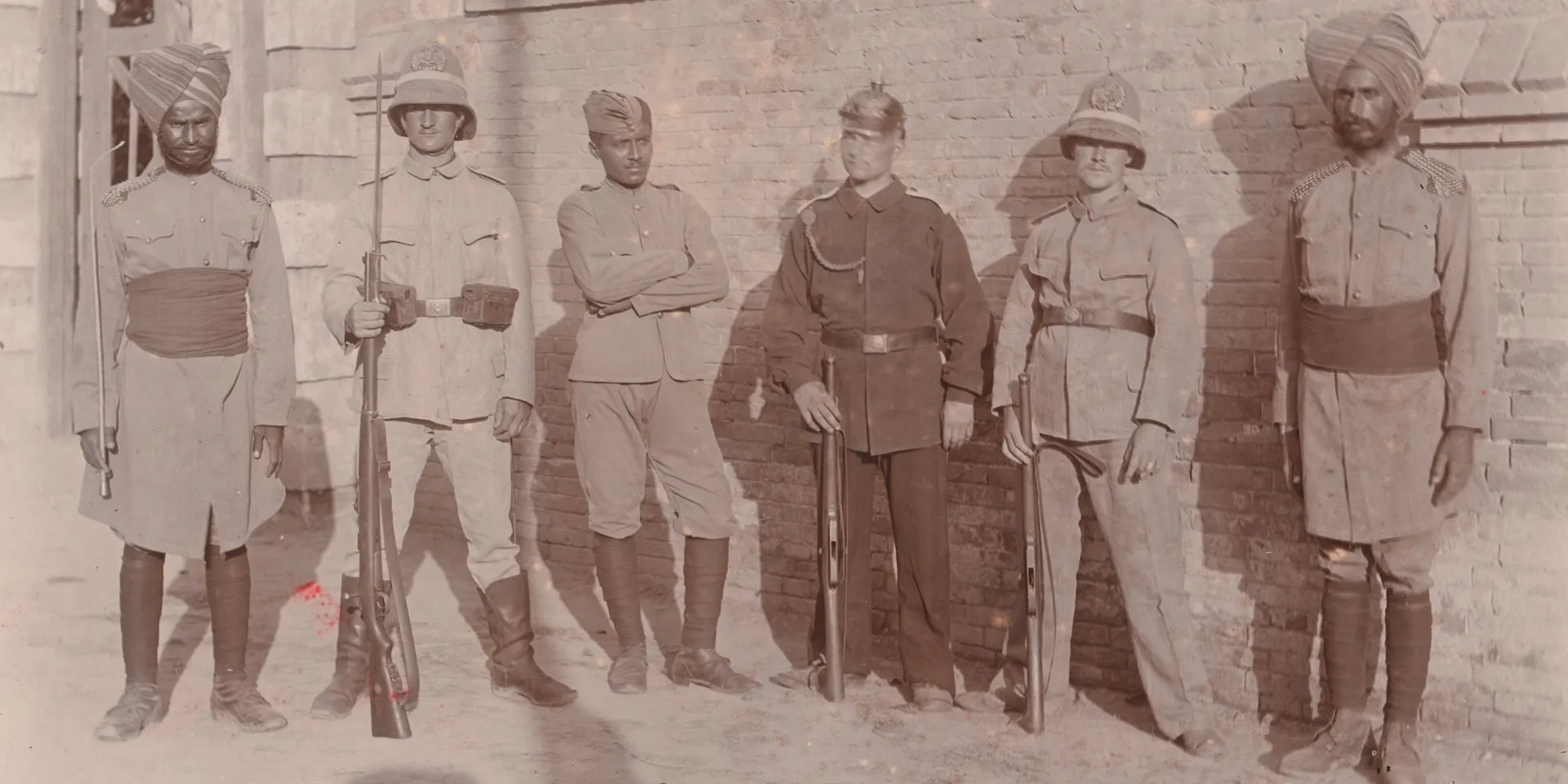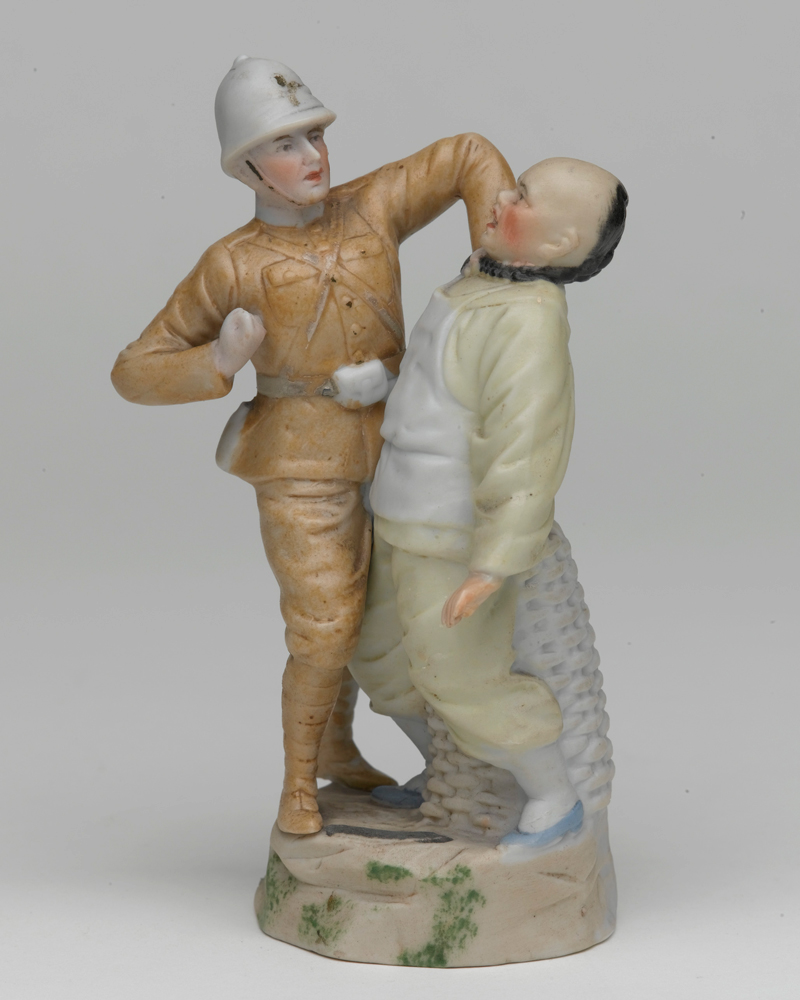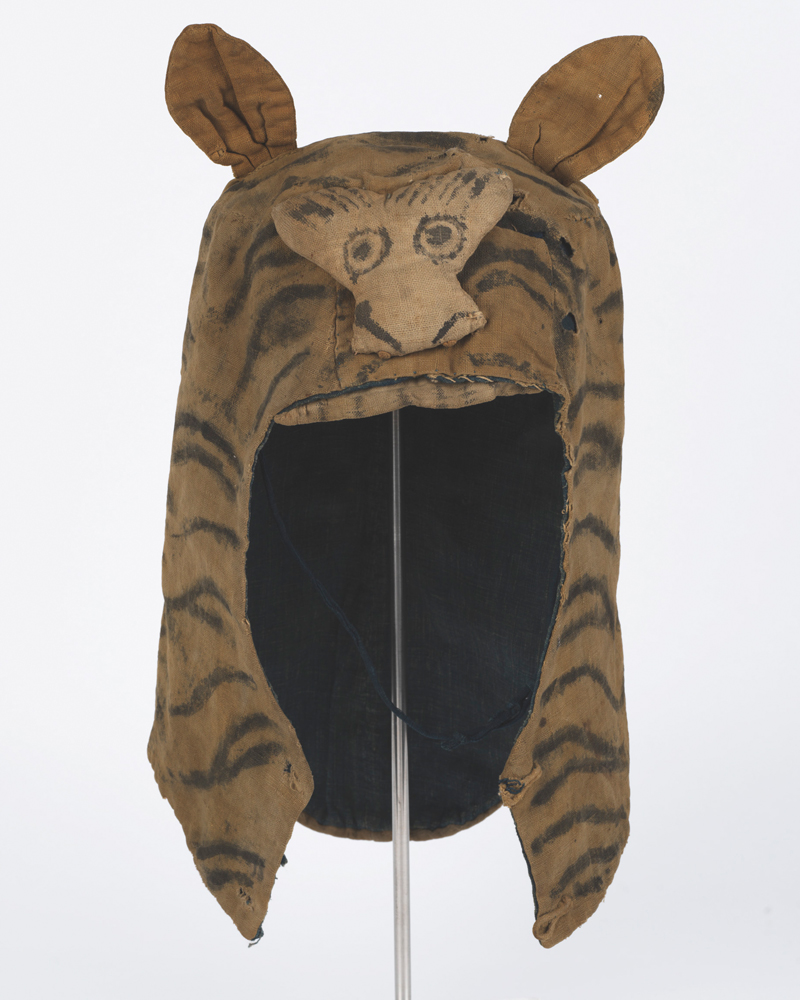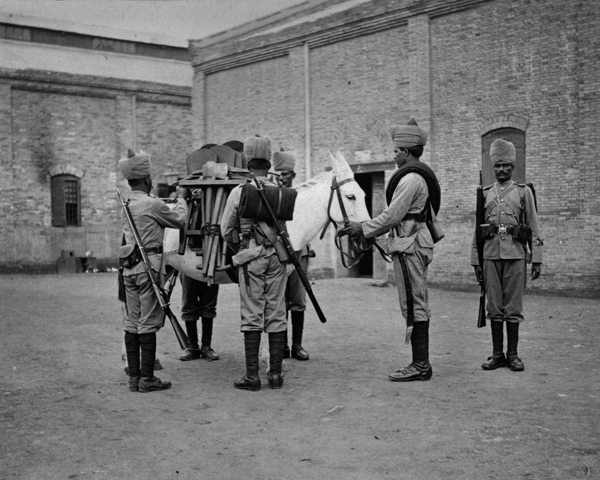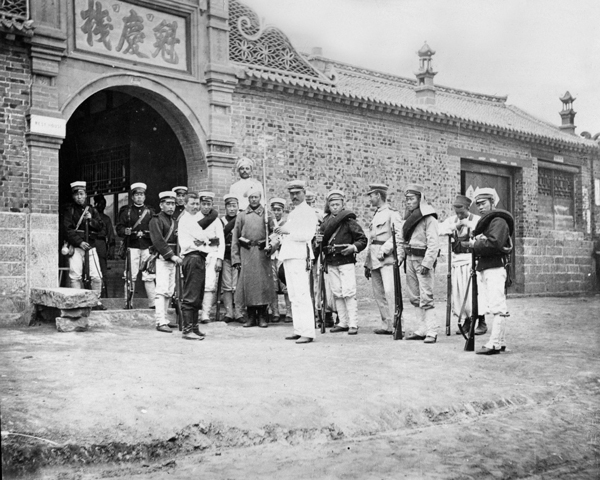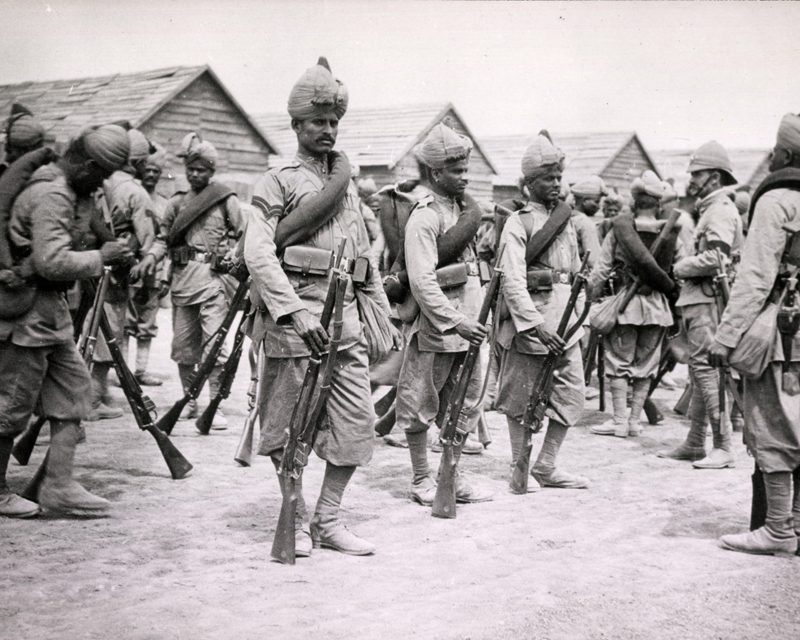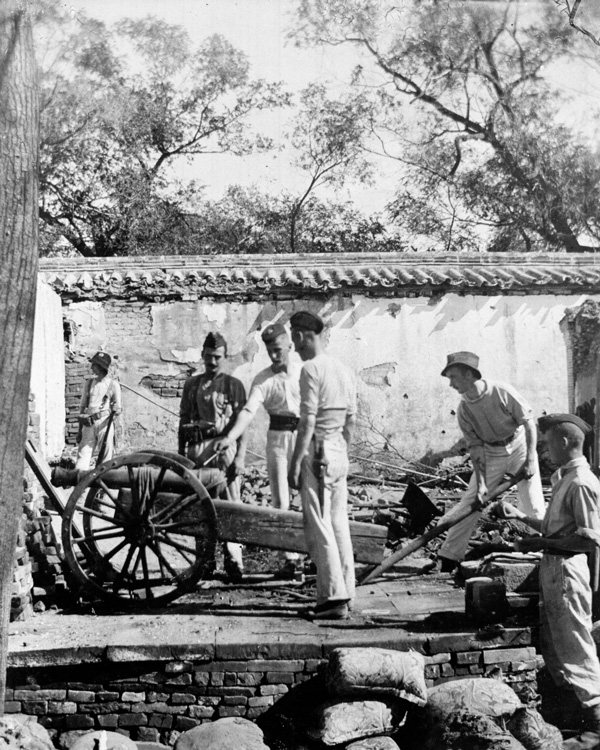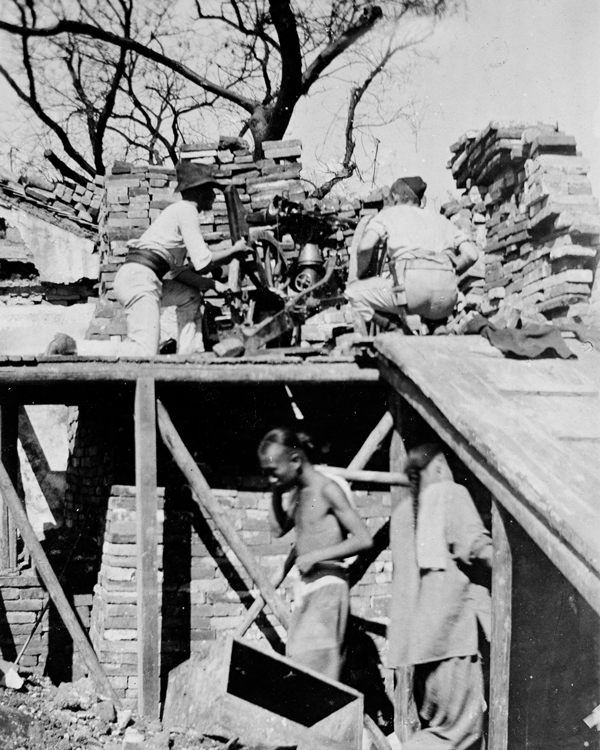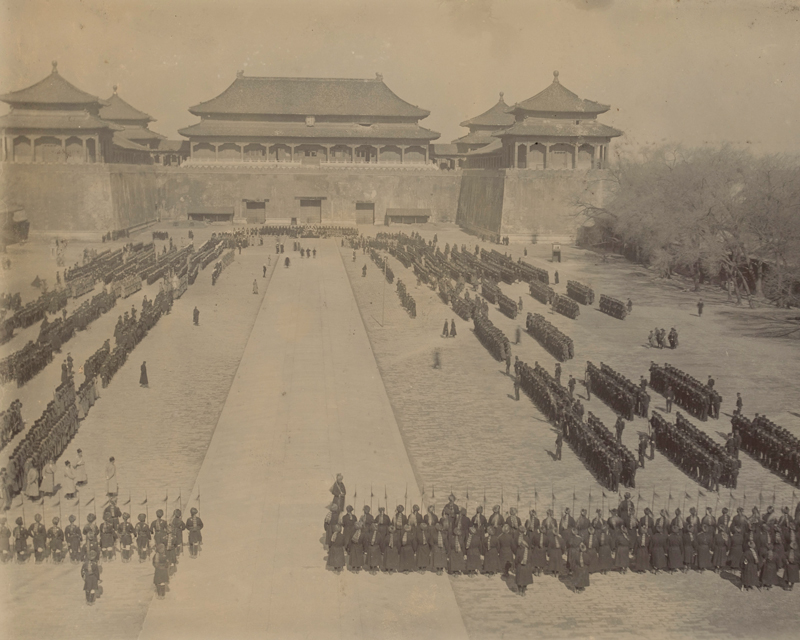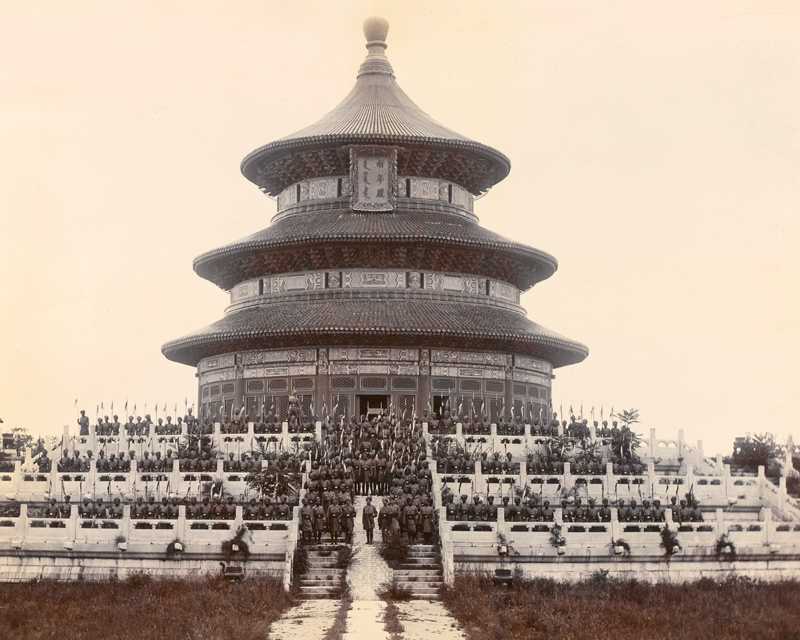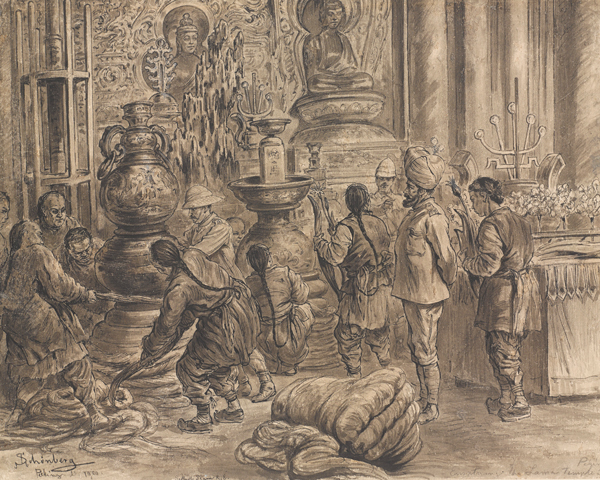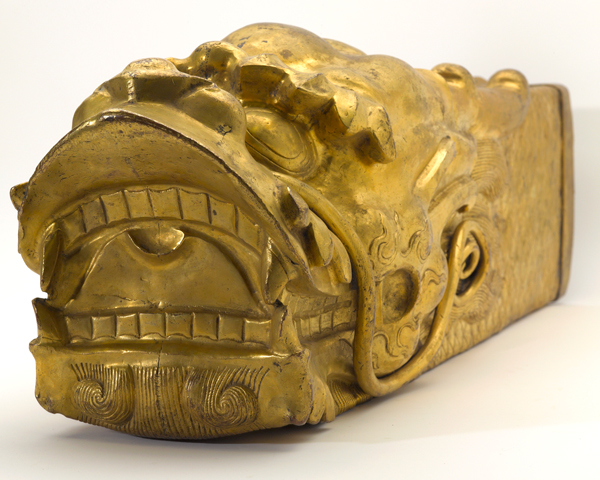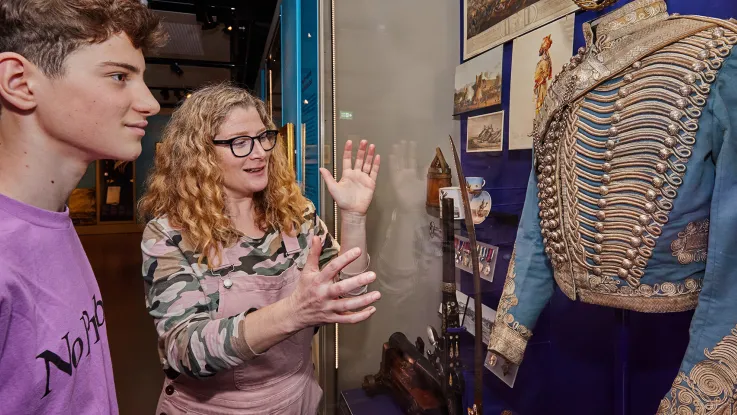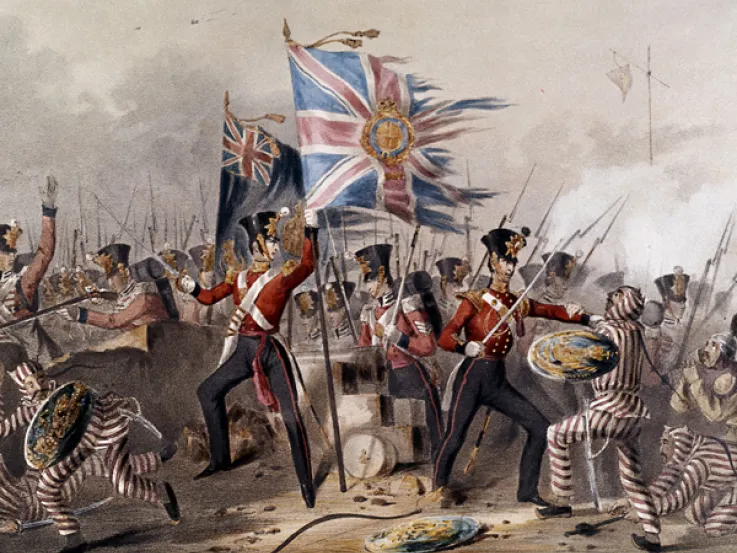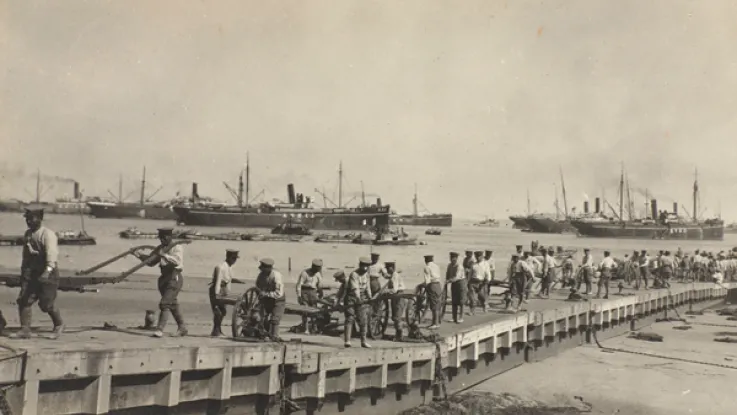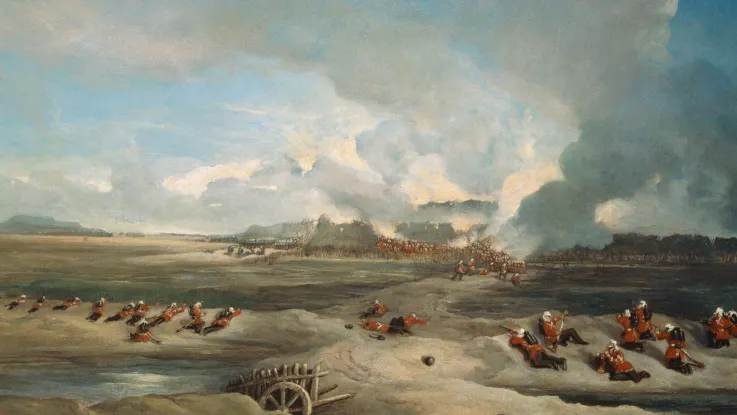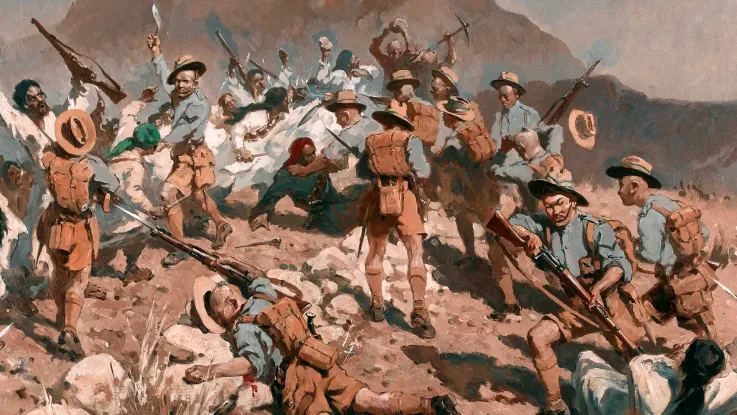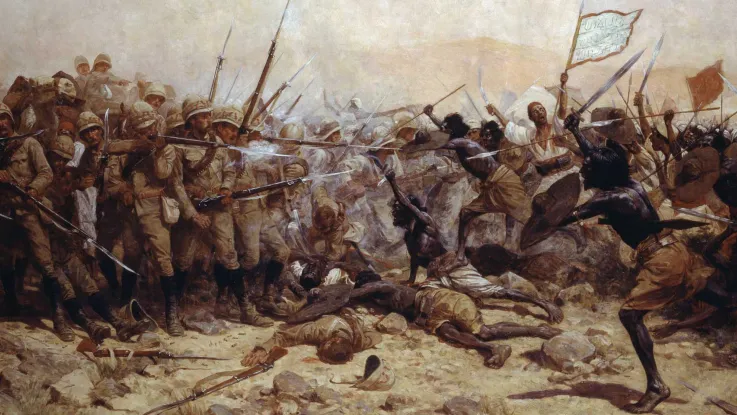Uprising
At the end of the 19th century, there was widespread indignation across China at growing economic hardship, compounded by decades of humiliating trade and political concessions granted to foreign powers by the ruling Qing dynasty.
This anger led to a violent uprising in the north of the country that targeted foreigners, Christian missionaries and Chinese Christian converts. Although started by peasants, it gained support from elements of the Imperial Chinese government and armed forces.
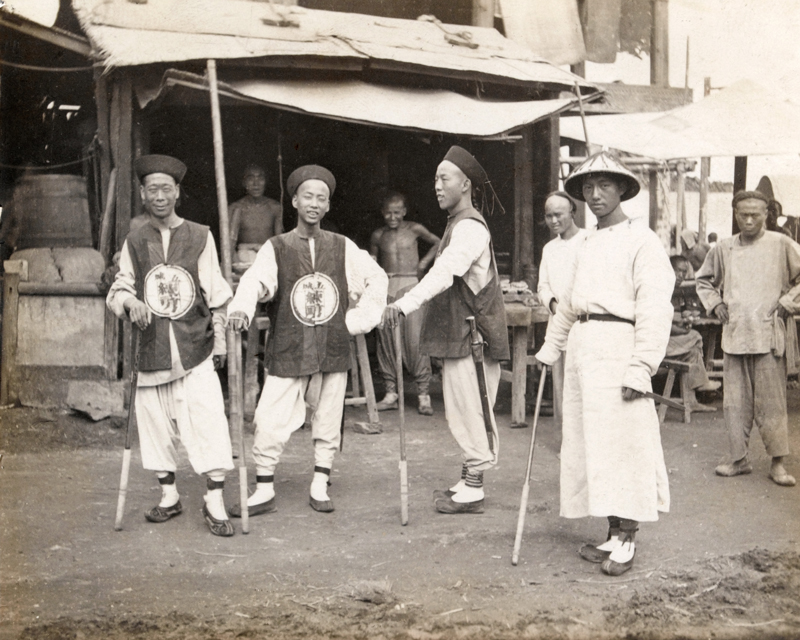
Imperial Chinese troops, 1900
Boxers
The uprising was initiated by a Chinese secret society called the Yihetuan (Righteous and Harmonious Fists). This group practised a form of martial arts that resembled boxing, at least to Western eyes. The 'Boxers', as they became known, embarked on an armed campaign to drive all foreigners out of China.
Although some of its members carried firearms, most were armed only with spears and swords. In some areas, the 'Boxers' were reinforced by better-equipped Imperial Chinese troops.
In June 1900, the growing violence forced foreign diplomats, missionaries, soldiers and Chinese Christians to take refuge in the Legation Quarter of the capital, Peking (Beijing), and issue a call for international help.
International relief force
An eight-nation alliance quickly despatched a 20,000-strong international force to relieve their legations in Beijing. It was commanded by Lieutenant-General Sir Alfred Gaselee, a British officer of the Indian Army.
Initially, the German Field Marshal Alfred von Waldersee was chosen as overall commander of the relief force, but he was detained in Germany with his troops. Gaselee's subsequent appointment was largely a result of the Western powers' refusal to be led by the higher-ranking Japanese general Yamaguchi Motomi.
March on Beijing
In response to this perceived invasion, the Empress Dowager Cixi (sometime written Tzu Hsi) ordered her imperial forces to block Gaselee’s advance on Beijing. However, the Chinese suffered a series of defeats, first at Tientsin (Tianjin) in July, then at Peitsang (Beicang) and Yangtsun (Yangcun) on 5-6 August.
Despite its military successes, the international relief force suffered heavily from heat exhaustion, sunstroke and disease. By the time it arrived in Beijing, the number of men available was down to around 10,000.
Under siege
Meanwhile, legation guards from Austria-Hungary, Britain, France, Italy, Germany, Japan, Russia and the United States were hard pressed defending the diplomatic quarter in Beijing.
The siege, which lasted for 55 days, witnessed repeated attacks by the 'Boxers' and their Imperial Chinese allies. About 60 foreigners and hundreds of Chinese Christians were killed.
One of the British officers involved was Lieutenant-Colonel Francis Poole of The East Yorkshire Regiment, who was in command of the hastily raised International Volunteers.
Of the various troops involved in the defence, Poole noted that the British 'were naturally the smartest’ and the Americans 'a serviceable looking lot’. However, he was less complimentary about the Russians and Italians.
Breakthrough
After breaching the city’s outer defences, Gaselee’s multinational force advanced towards the Legation Quarter on 14-15 August. The various contingents vied with each other to be the first to arrive.
At first, the Russians and Americans were in the lead, but they were held up by stiffening resistance. In the end, the British got there first, mainly because their route was less defended.
Forbidden City
After liberating the besieged Legation Quarter, the international relief force cleared the outer walls of troops. With assistance from the Russians and the French, American artillery units then blasted their way through a series of walls and gates into the Imperial City.
They halted their advance when they reached the gates to the Forbidden City, the home of the Chinese emperors and their governments. The Empress Dowager fled, disguised as a peasant, along with most of the royal court.
Spoils
The international forces then divided Beijing into districts, with each nation administering one of these areas. In some districts, those suspected of being 'Boxers' were subject to summary execution.
Many of the international soldiers pillaged the city, partly in revenge for the deaths of foreign missionaries and Chinese Christians.
In the British district, Gaselee established auctions of loot at the British Legation, with the proceeds being distributed by a prize committee to the troops.
End of empire
The rebellion officially ended in September 1901 with the signing of the Boxer Protocol. This allowed foreign troops to be stationed in Beijing and led to the destruction of several fortifications. The agreement also forced China to pay a huge indemnity to the nations involved in the conflict.
The Qing dynasty was greatly weakened as a result of the Boxer Rebellion. Despite subsequently implementing liberal economic and political reforms, the dynasty was overthrown in 1911. The Republic of China was established the following year, bringing an end to more than 2,000 years of imperial dynastic rule.

